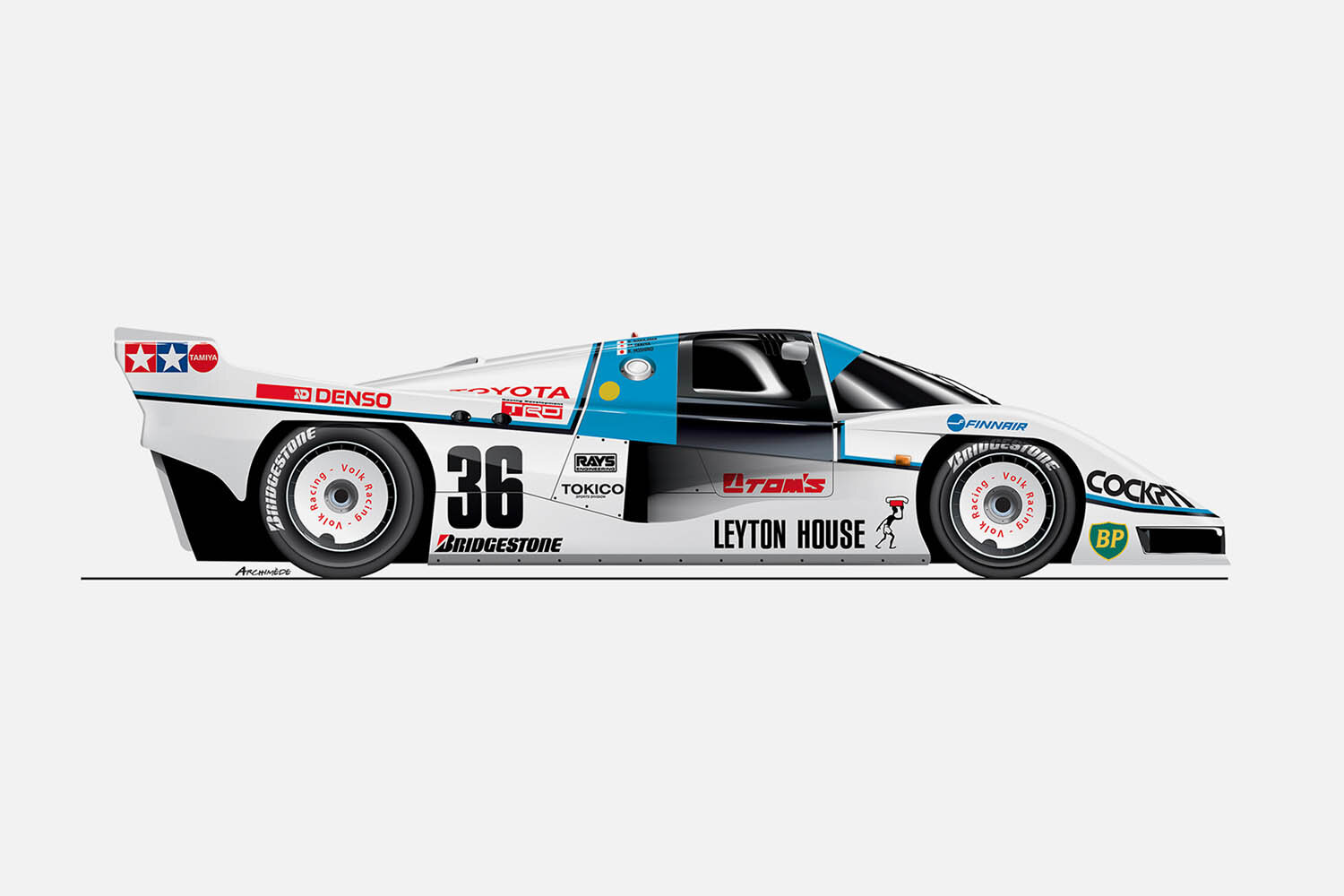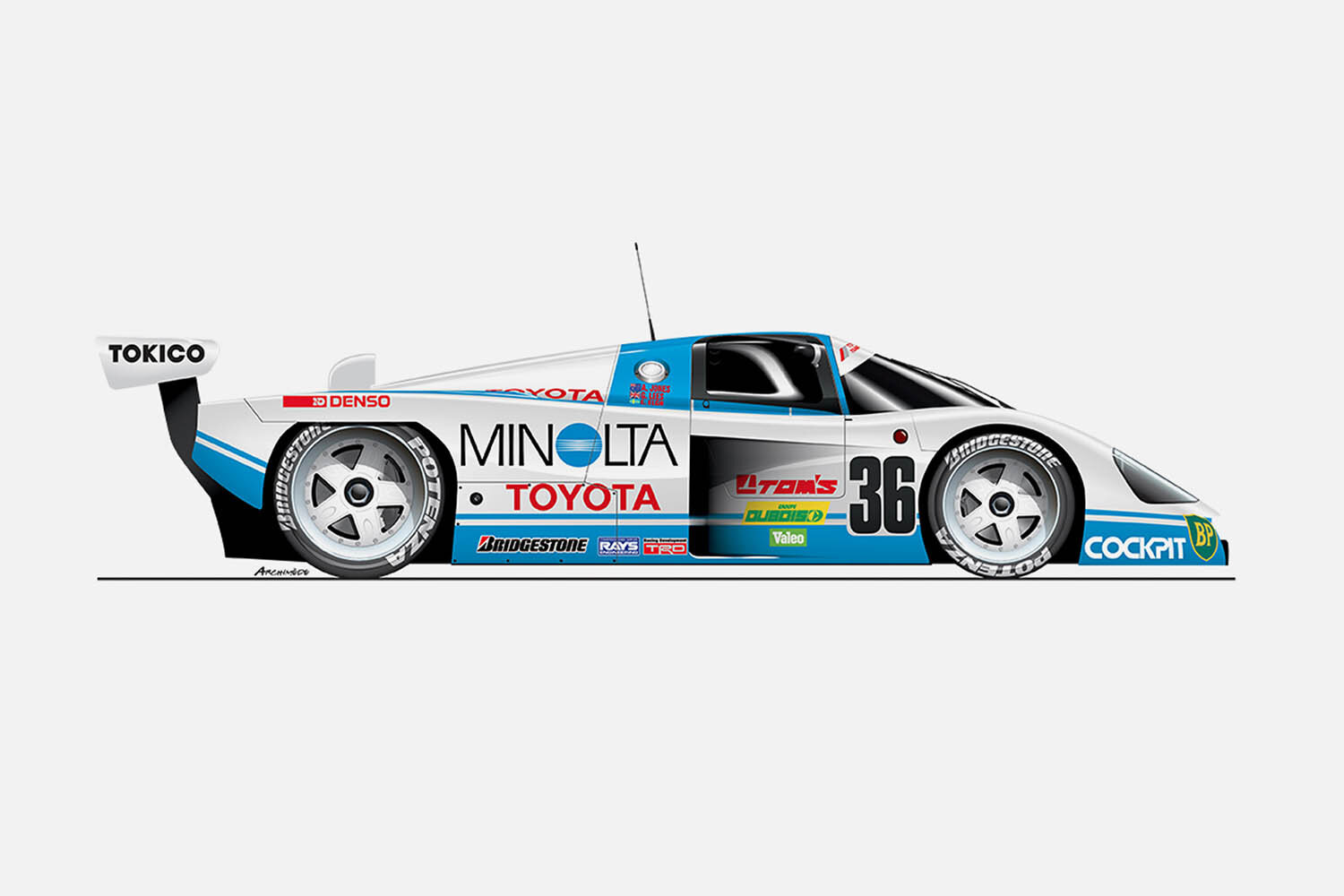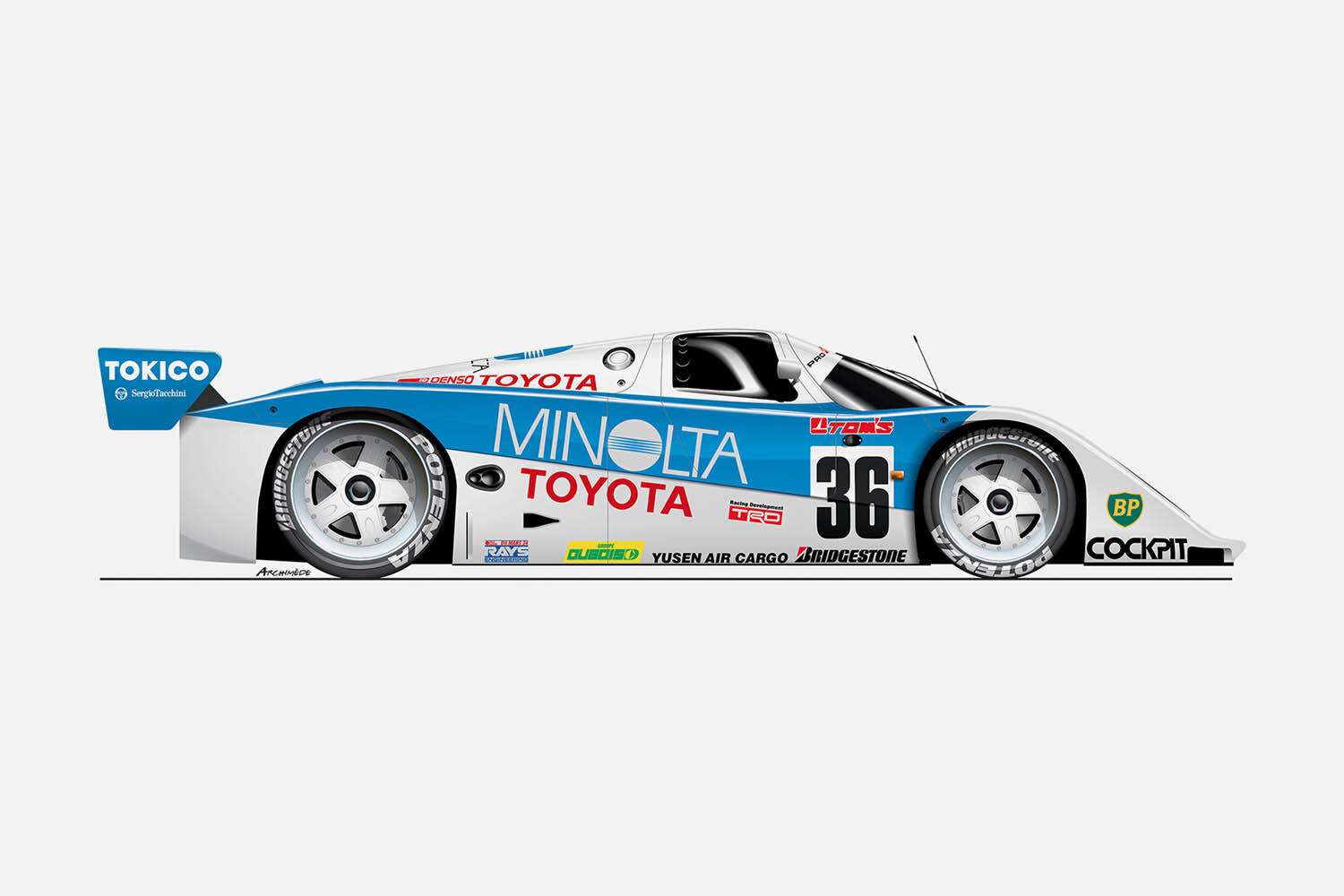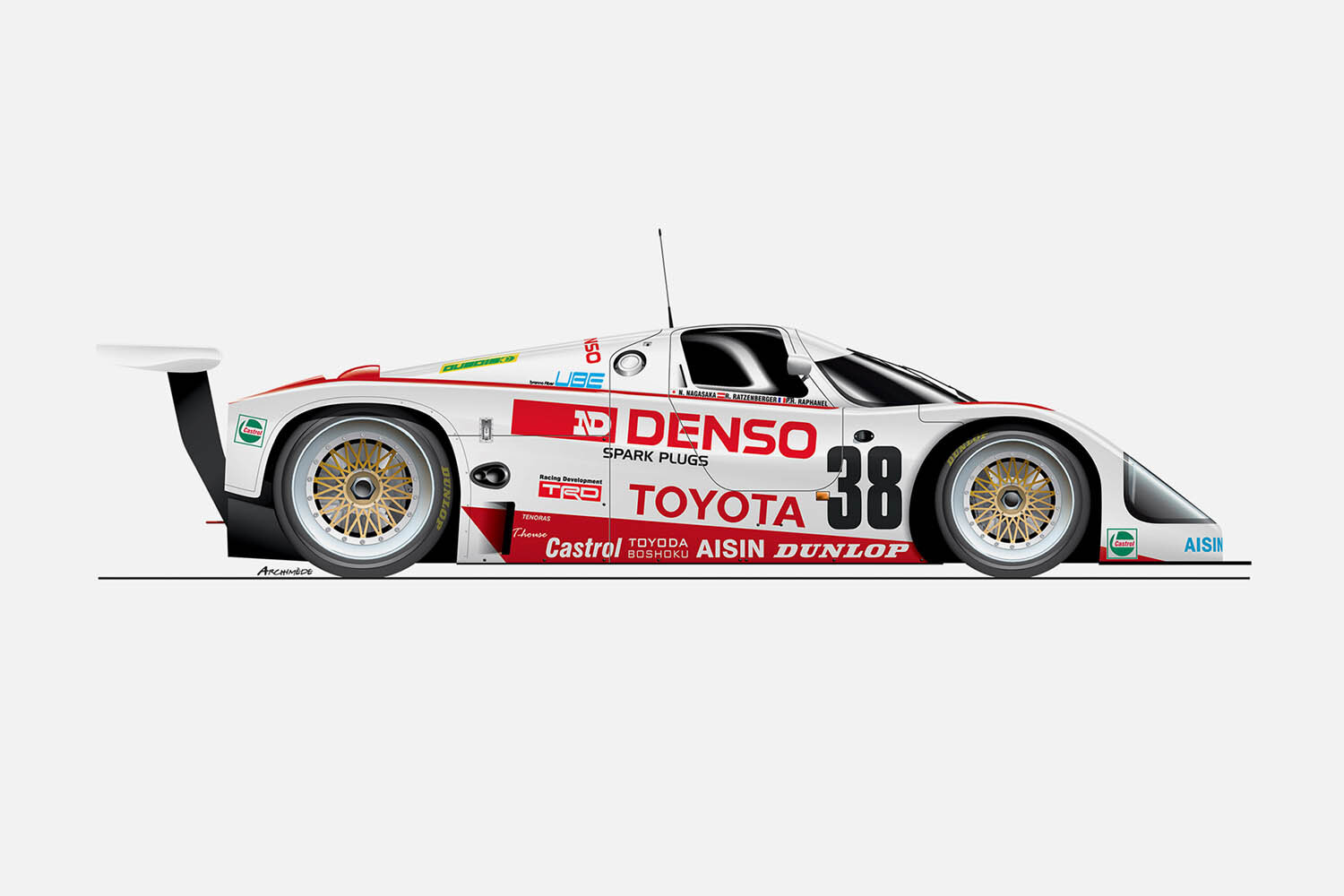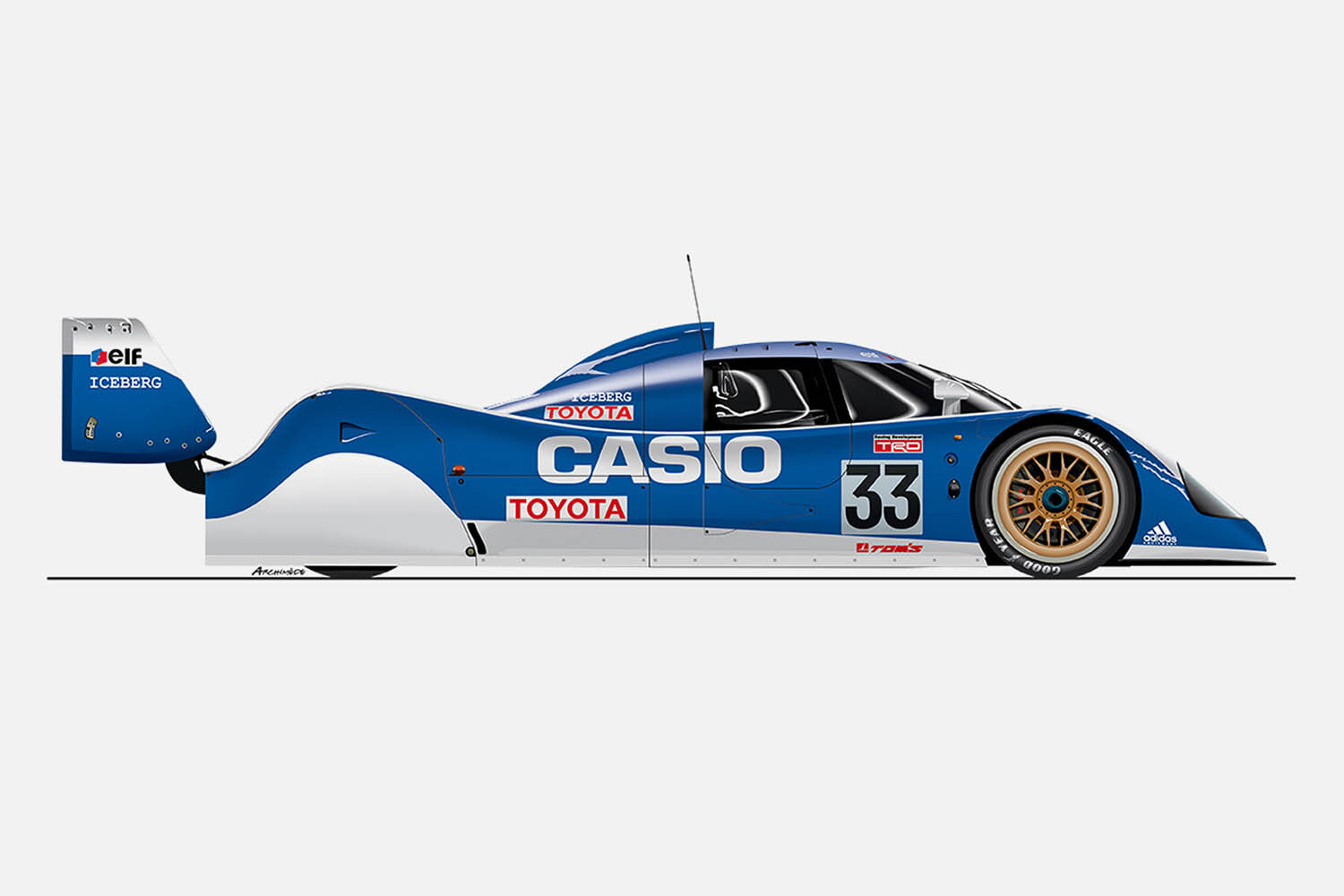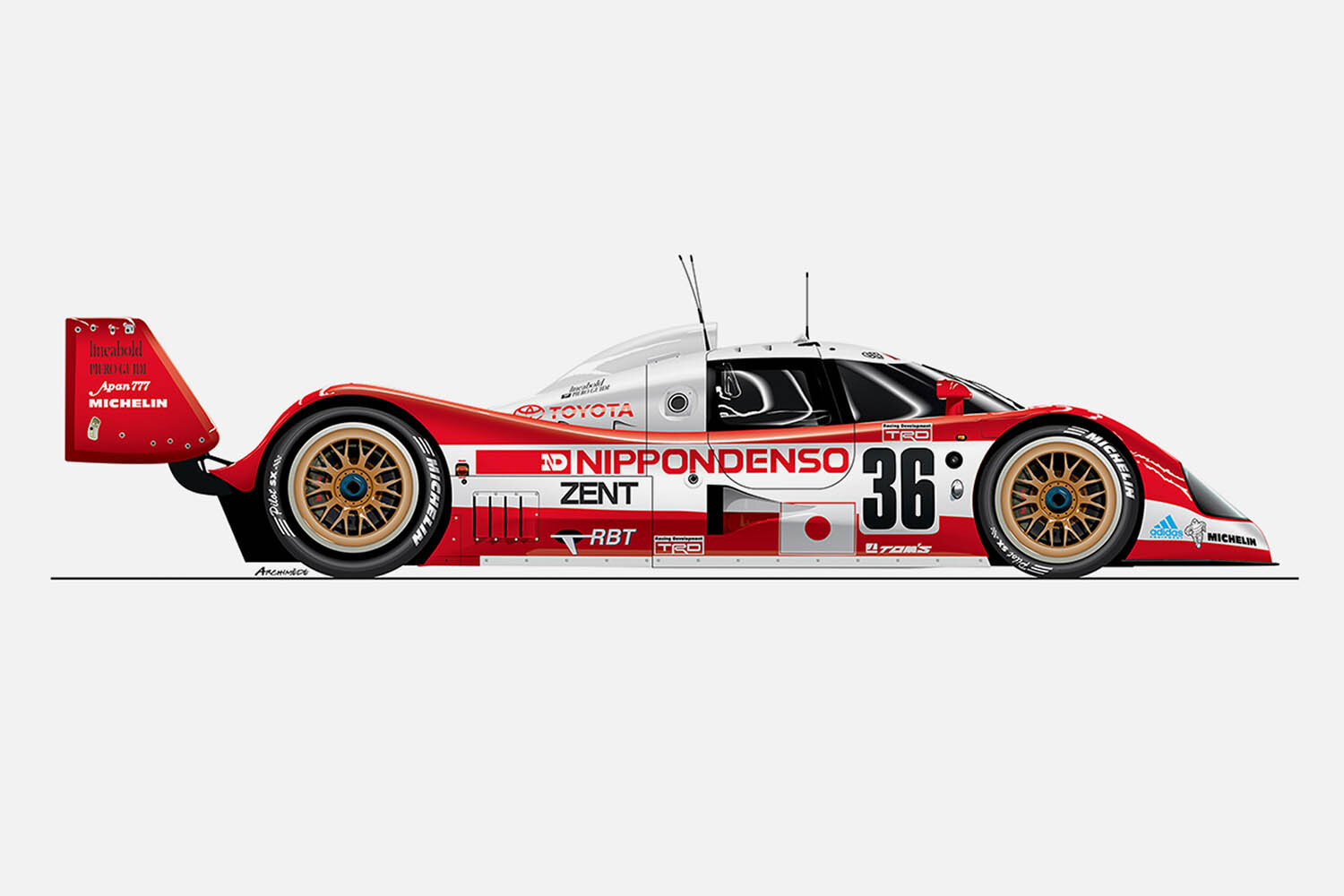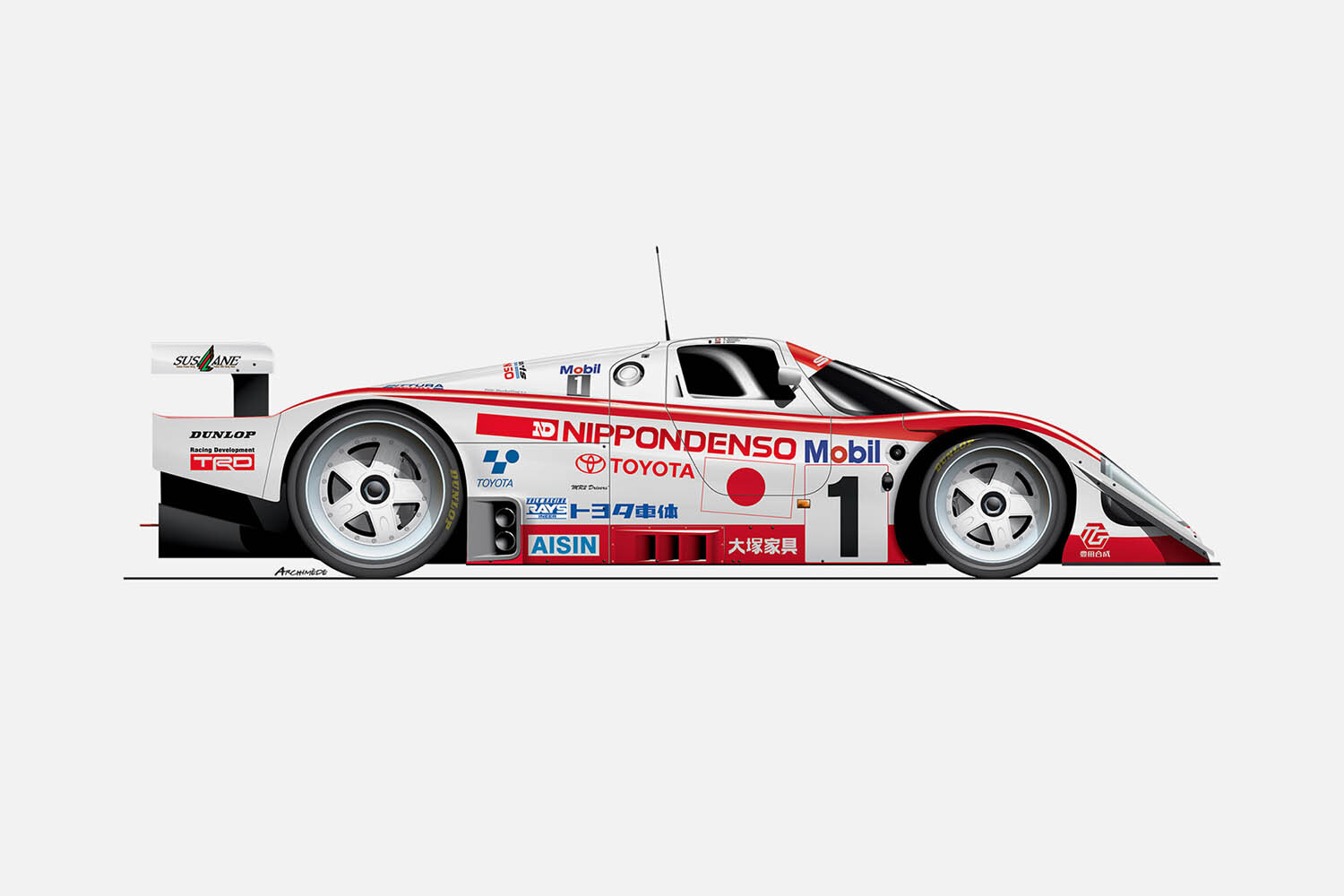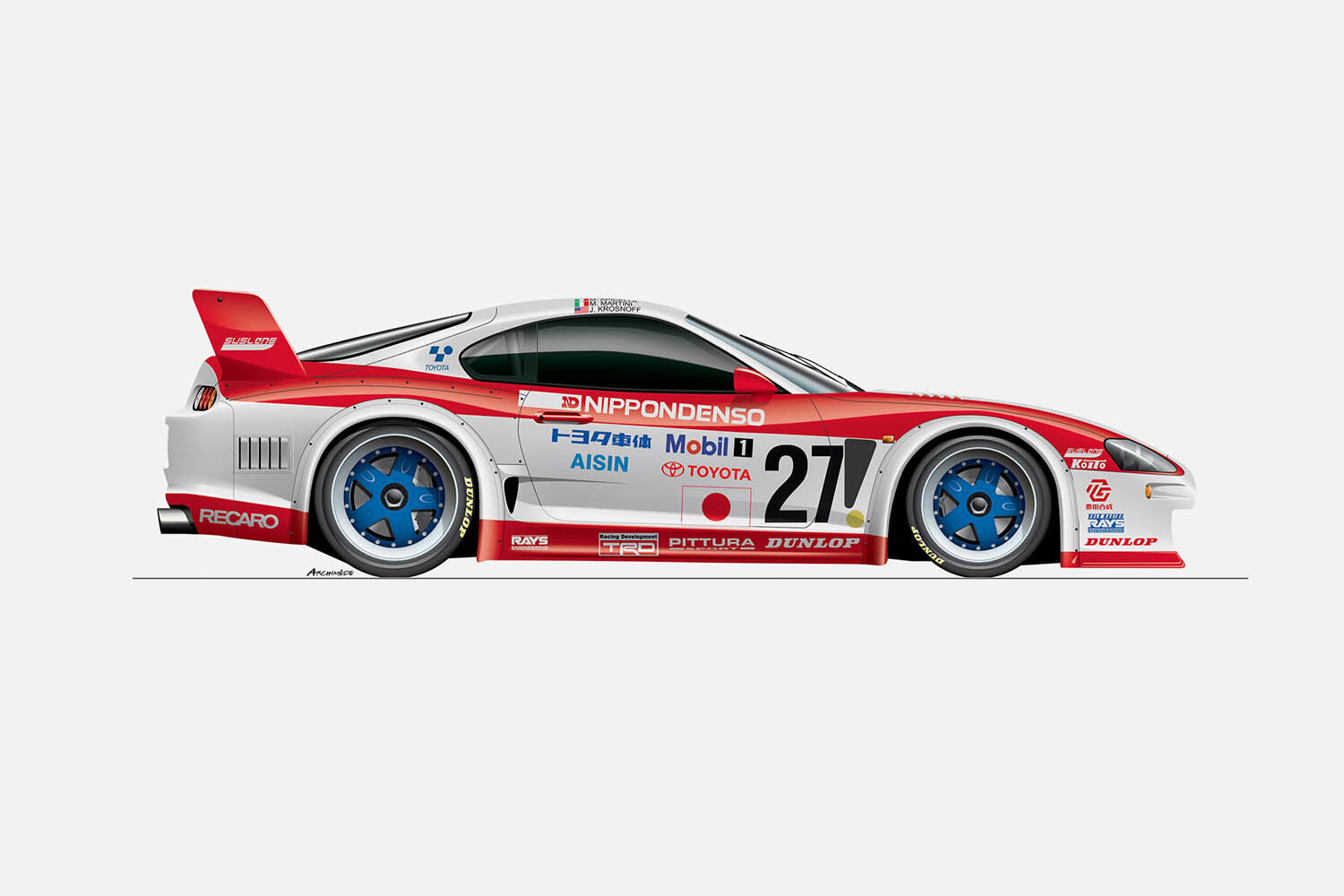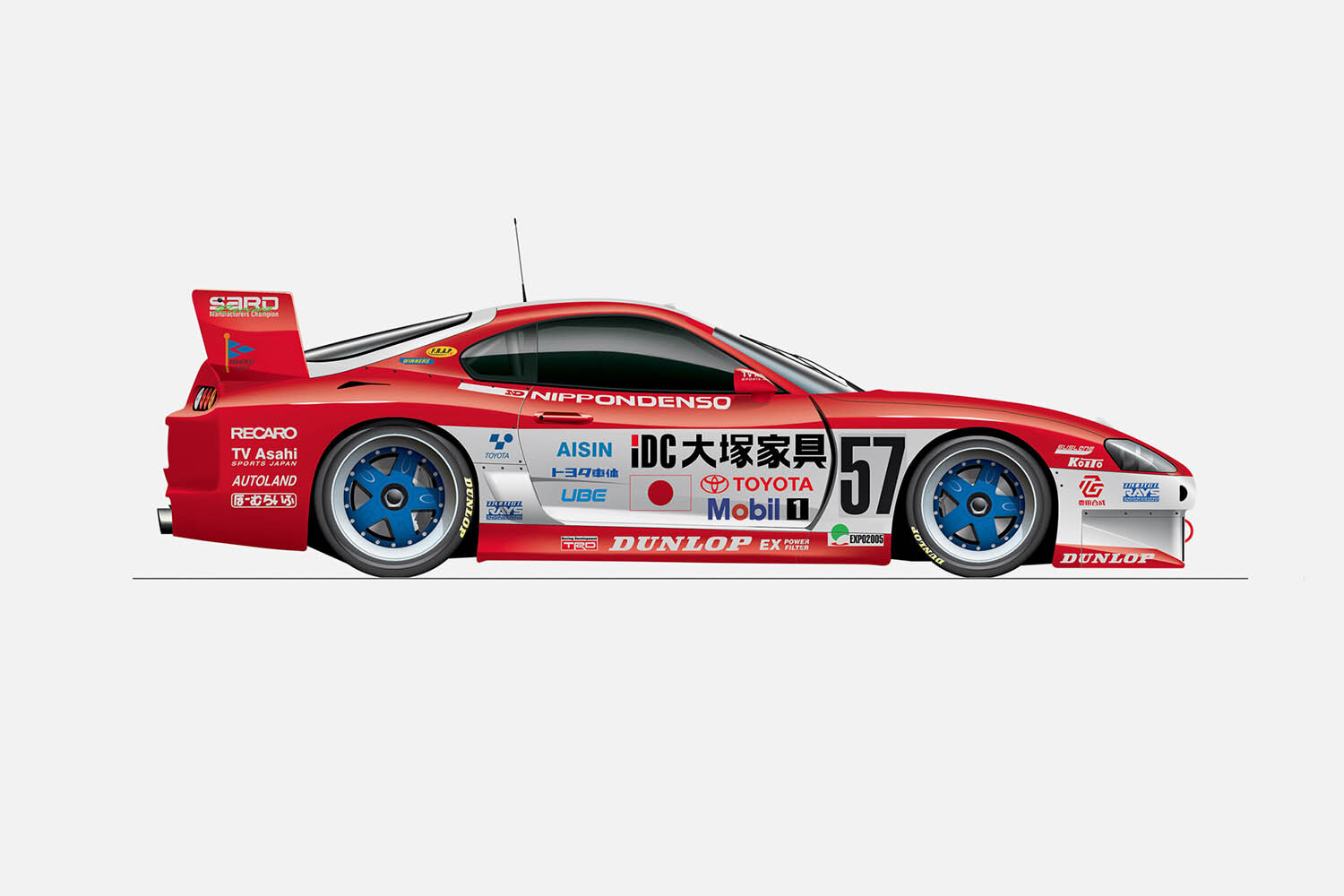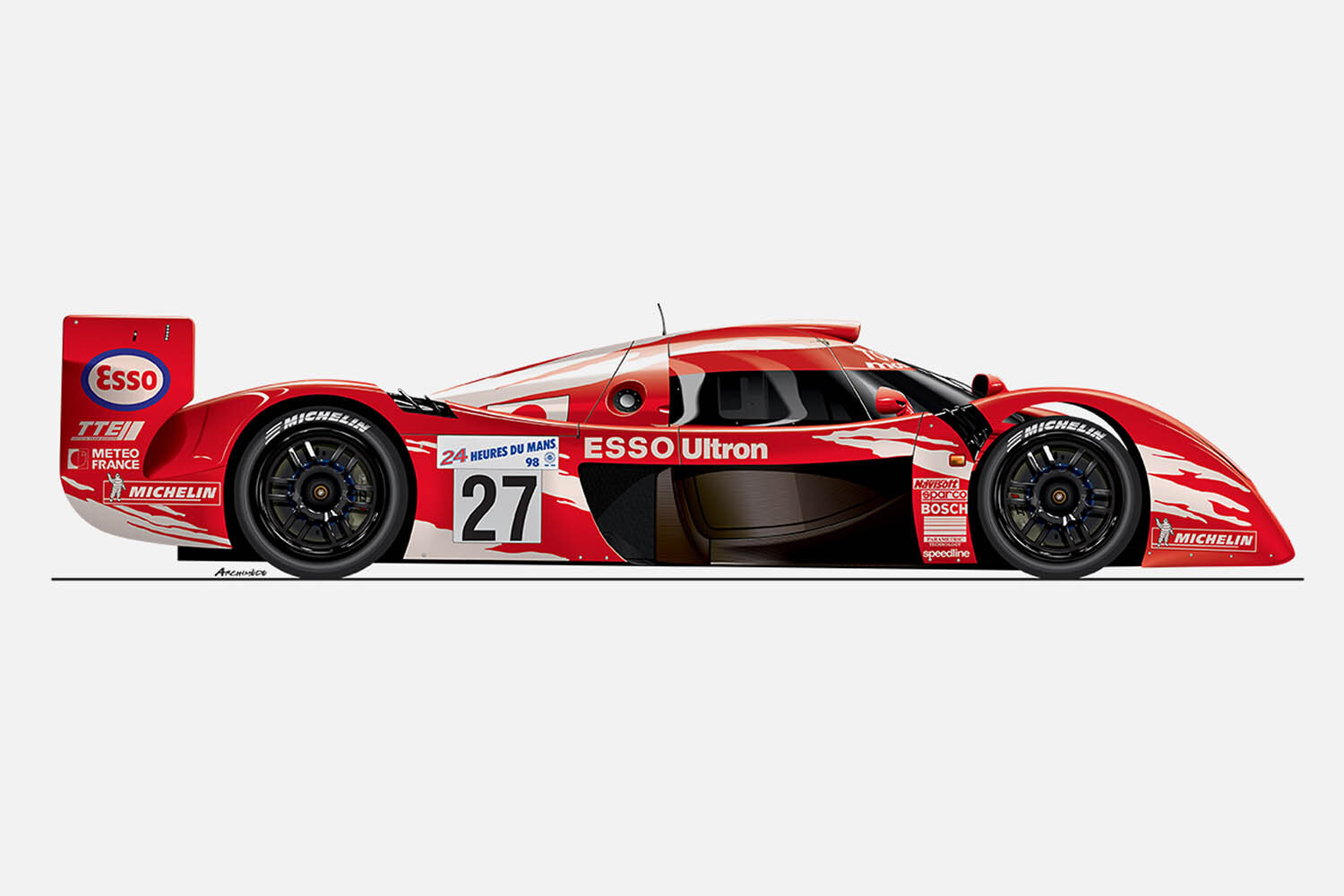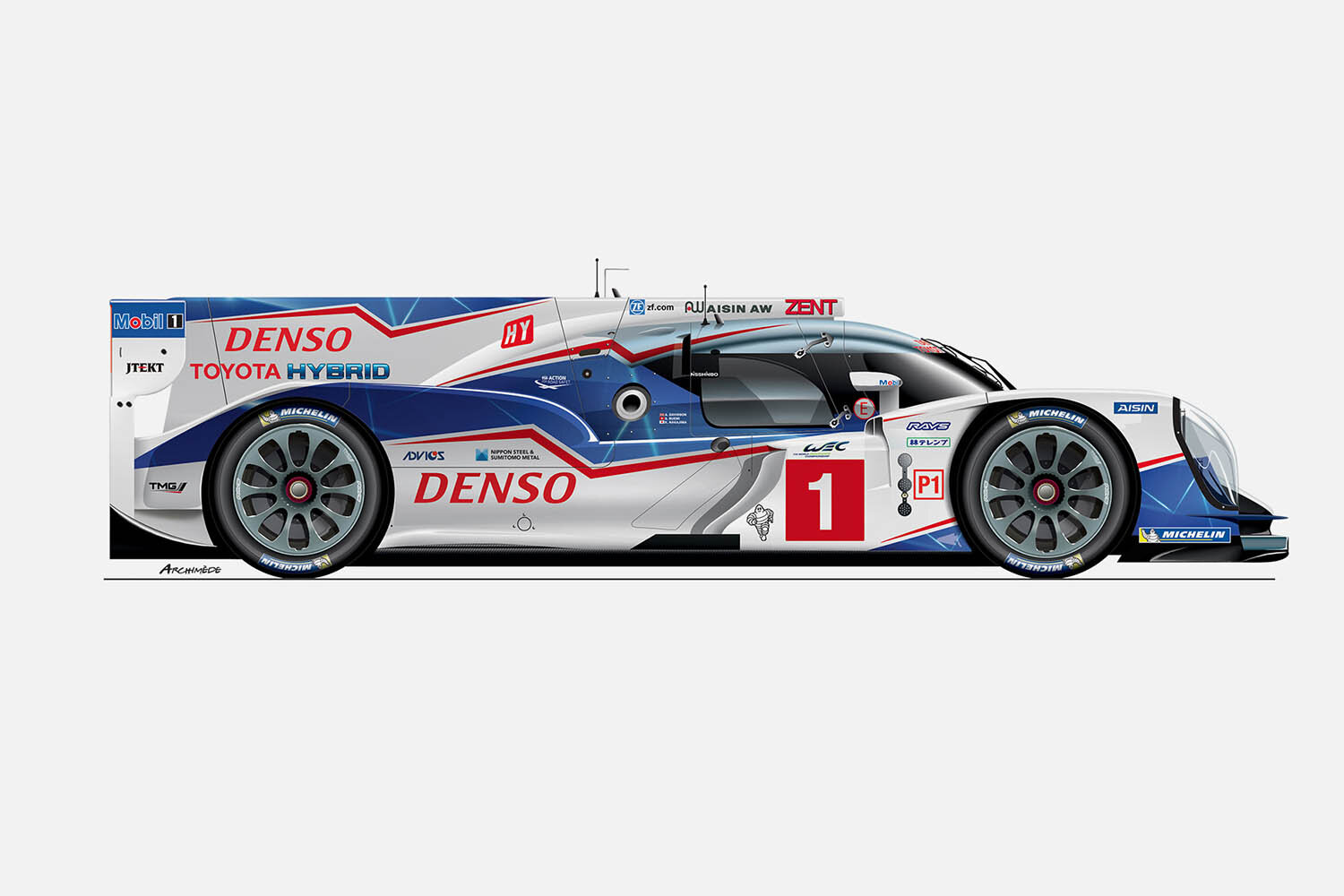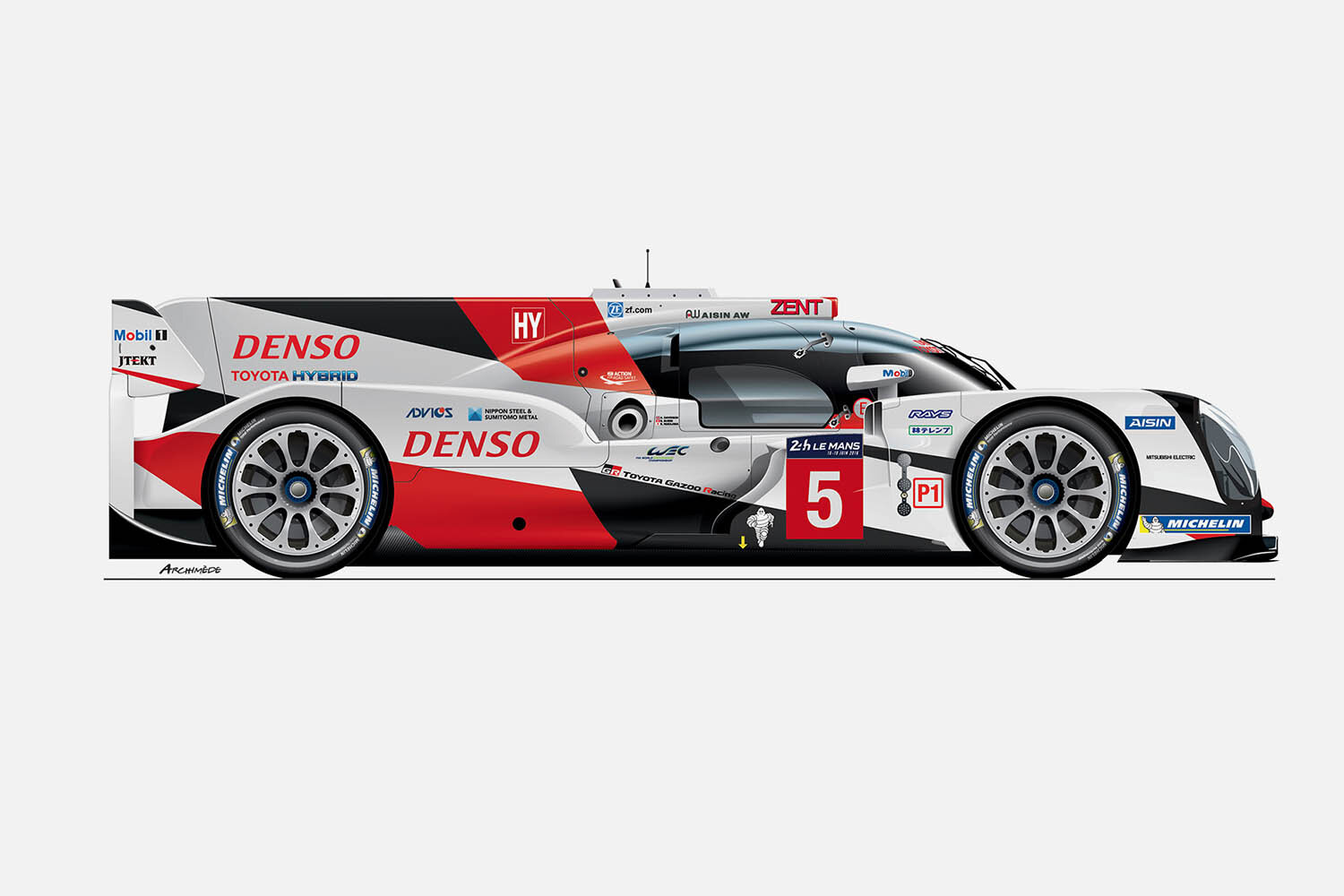Toyota at Le Mans
Toyota’s first participation at Le Mans was in 1985, but victory would not be achieved until 2018. Their first foray at Le Mans began in 1985, with the TOM’s 85C, the No.36 car finished in 12th position. Returning in 1986, the car to take on the challenge of the Circuit de la Sarthe was the Dome 86C, but reliability issues took the two competing cars out of the famously punishing race. In 1987 the Toyota 87C took to the circuit but again reliability issues dashed the hopes of both participating cars. Despite these setbacks, Toyota’s persistence at Le Mans was rewarded in 1988 with the Toyota 88C finishing 12th and 15th in Group C1.
In 1990 Toyota secured their best ever position at Le Mans with the Toyota 90C-V finishing in sixth place. From 1991, the FIA Group C category opened the competition to high tech sports cars with Formula 1-style 3.5-litre V10 engines. The 1992 24 Hours at Le Mans and 60th race, saw a three-car line-up of the Tony Southgate designed TS010 alongside two 92C-V cars. The chequered flag resulted in Toyota securing second place, achieving a long-desired first ever podium finish. 1993 was a repeat of 1992 with a trio of cars, with the top position of fourth place. Even though the TS010 never claimed a Le Mans victory, it was one of the fastest cars to take to the track setting lap records in both 1992 and 1993.
Following the demise of Group C, in 1994 Toyota entrusted the 94C-V to Team Sard for entry in the LMP1 class. Unfortunately, having led for the majority of the race, last-hour problems meant the trophy slipped away again and the team took second place. In 1995 and 1996, Toyota changed tack and supported Team Sard in modifying a Japanese GT Championship Supra to Le Mans specification, finishing in 14th place in 1995 and retiring after an accident on lap 205 in 1996.
The first competition appearance of the stunning TS020 came in 1998, with the three-driver No.28 car qualifying in second place. The team managed to hold this position until the final hour when their car had to retire due to transmission problems. The No.27 car continued to the end finishing ninth. In 1999 Toyota returned to Le Mans with a new white-nosed car and swept all competition aside in qualifying, claiming first, second and eighth on the grid. During the race however, two cars were side-lined due to separate accidents while the No3 car posted a new lap record on its way to second place, despite a late puncture.
Leaping forward to 2012, Toyota celebrated its Le Mans comeback by entering two of the newly developed TS030 Hybrids to compete in the top LMP1 category. The No.8 car crashed out, while the No.7 which had led the race, retired due to a technical problem, but Toyota was back in endurance racing and competing in the top category. In 2013, the cars netted second and fourth-place finishes. The following year saw the TS040 Hybrid, now with four-wheel drive the No.7 car earned pole position and lead for long periods until retiring due to a wiring problem, although the sister car secured another podium for the team, third place.
The TS040 was updated for the 2015, achieving sixth and eighth places. Significant regulation changes in 2016 led to the introduction of the TS050, the latest iteration and a very different animal to its predecessor. It proved to be one of the closest fights in Le Mans history with Toyota and one of the most heart-breaking finishes. Leading the race on the penultimate lap, with victory finally in sight, the TS050 suffered the failure of a small part and rolled to a halt on the start-finish straight. Toyota endured a similar experience in 2017, in which two of its TS050 Hybrid models failed to finish while the remaining car finished in ninth place.
The 2018-2019 TS050 Hybrid was largely the same as the 2017 car, which ended the season with three consecutive victories. However, every component was reviewed, with the biggest change being a weight reduction of the battery and its associated cooling system. The super-season included two visits to Le Mans. The first took place in 2018, where the TS050 Hybrid took the chequered flag in emphatic fashion, securing both first and second place in what was Toyota’s 20th entry in this world-famous race, achieving the result that had proved so elusive on so many occasions. The second race, which took place in June 2019, also concluded with an identical one-two finish, although a final hour drama saw the No.8 car switch places with the No.7 car that had looked set for victory but suffered a late puncture.
This weekend sees Toyota attempt to complete their hat-trick of wins at the blue ribbon, 24 Hours of Le Mans, and with it, slowly bring to an end the stellar career of their TS050 Hybrid racing car. These beautiful profile illustrations capture some of the iconic cars that the Japanese manufacturer has entered at La Sarthe over the last 35 years.
Images © Toyota

